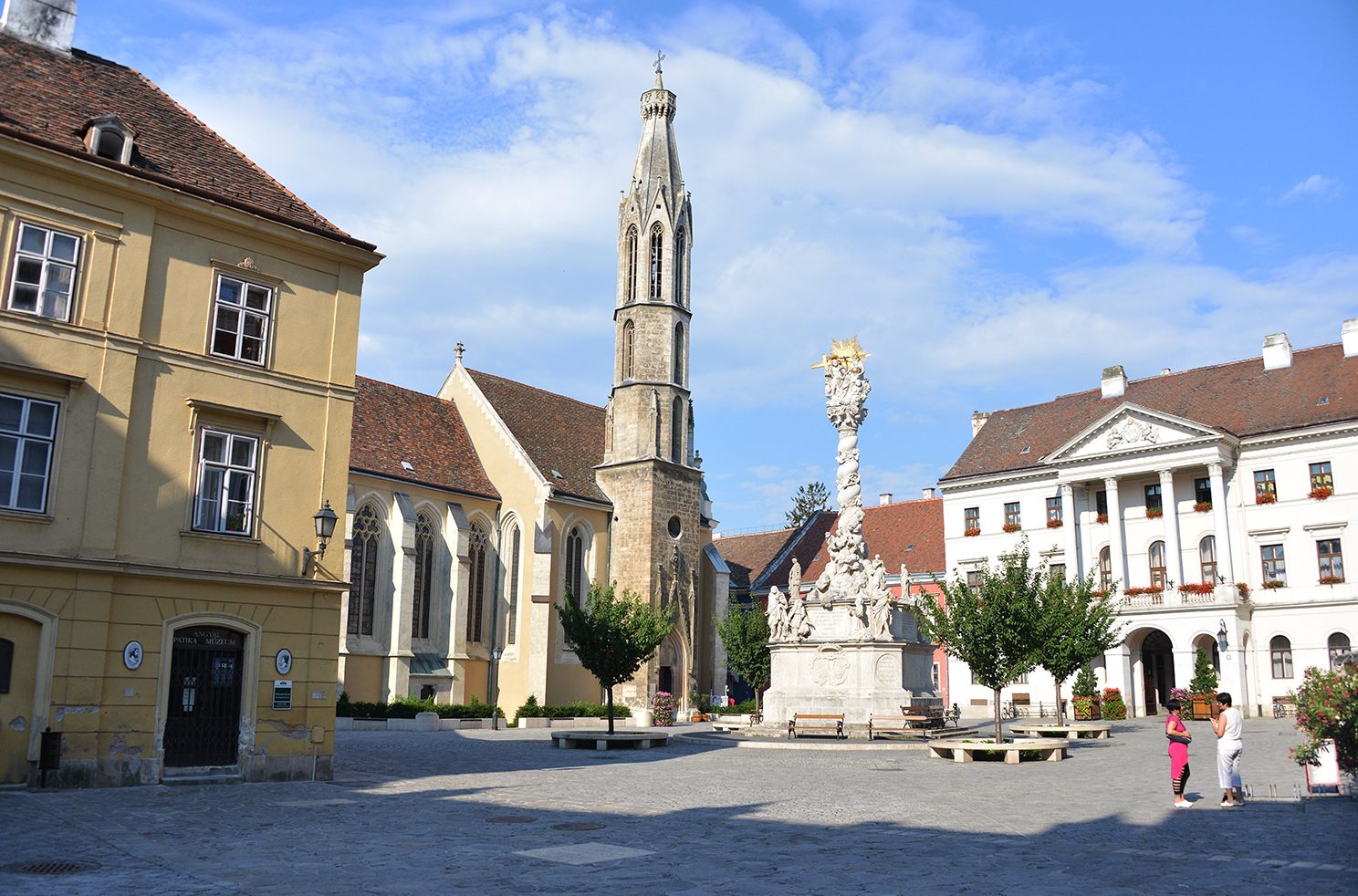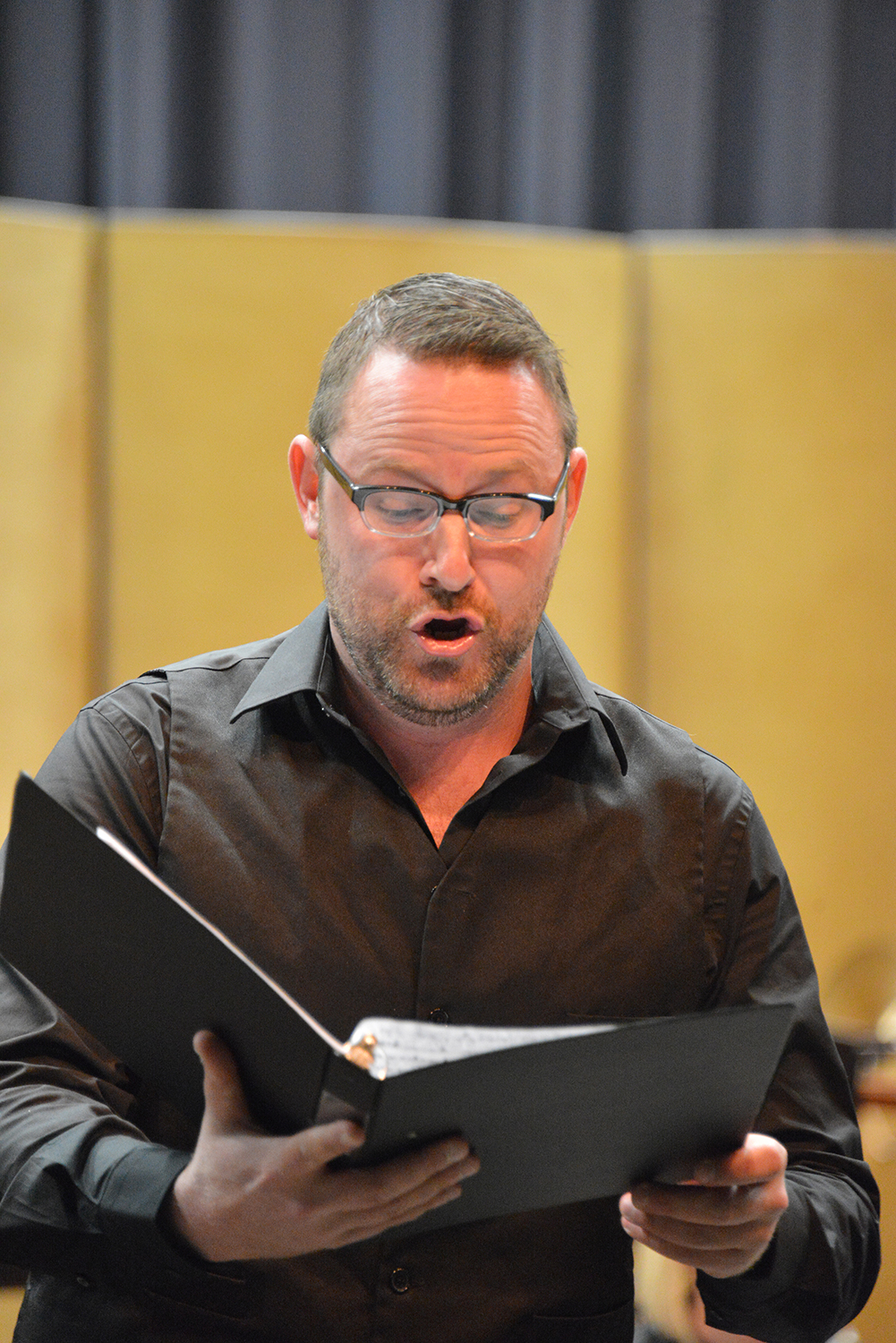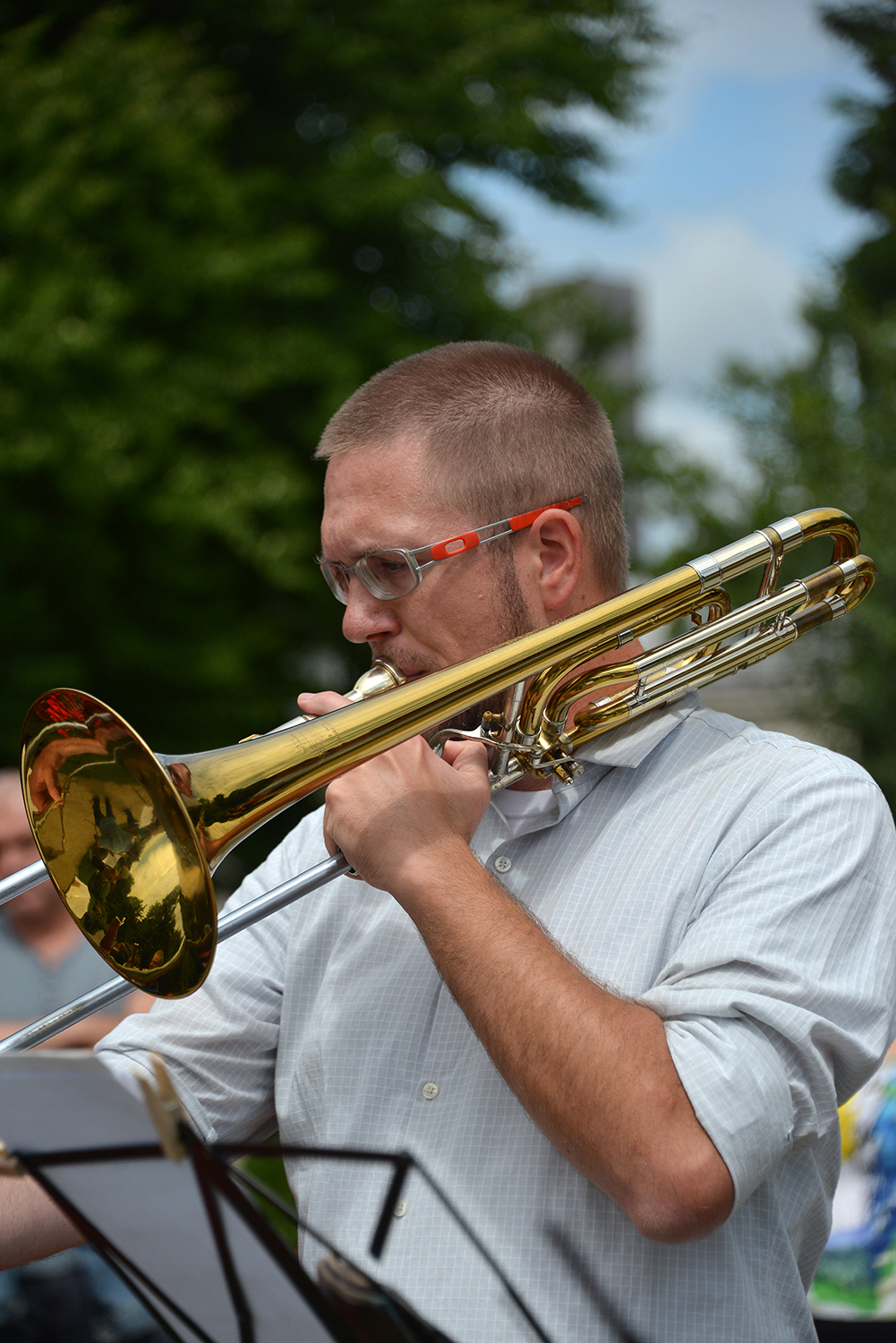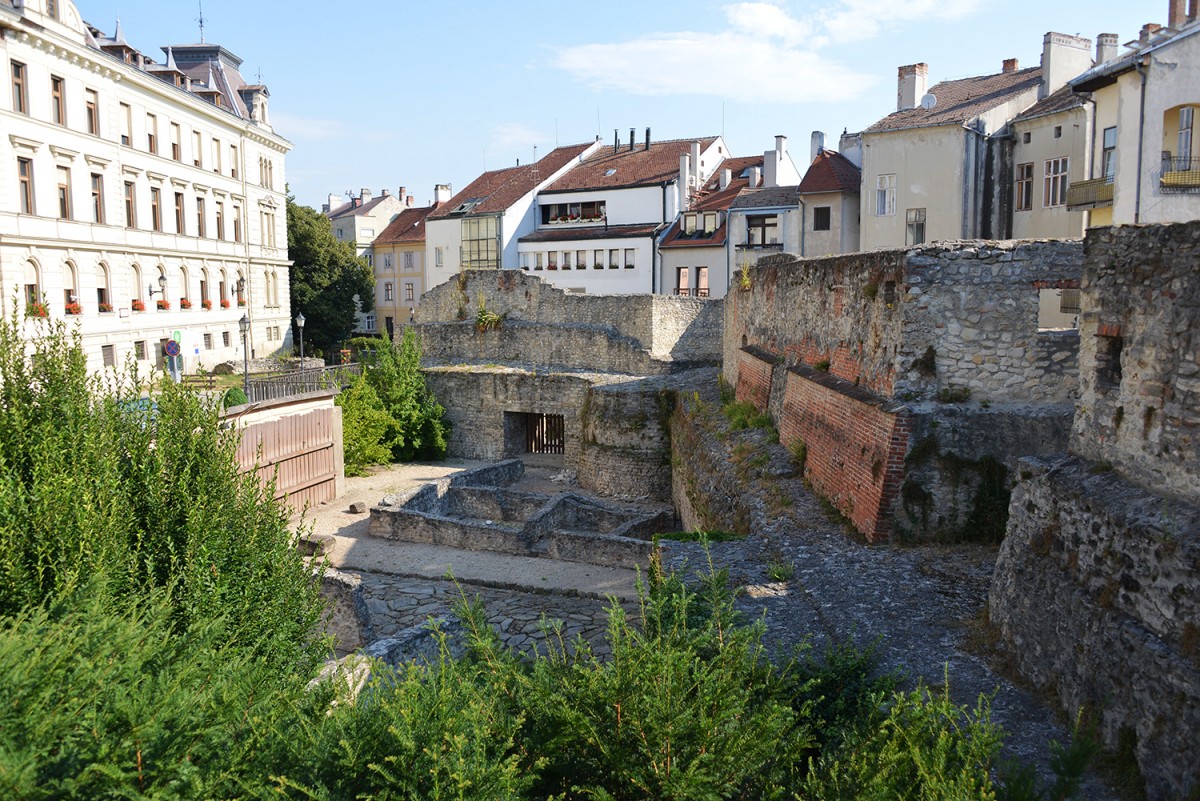
Roman ruins, Sopron, Hungary.
Originally a trade route town on the Roman Amber Road, Sopron is a small town of significance near the Austrian border, featuring a center square with medieval and Gothic architecture, interwoven with 1st and 2nd Century Roman roads and ruins.

Monument honoring Jewish citizens, captured and taken to Auschwitz in 1944.
“Ebben az utcàban 1944 majusban es juniusban a zsidok elkulonitese gettó letesitettek. Az auschwitz-birkenauba hurcolt aldozatok emlekere allitotta sopron onkormanyzata. 1996-BAN”
After the collapse of the Austro-Hungarian Empire, instead of joining Austria, in 1921 Sopron voted to remain part of Hungary and is thus referred to as Hungary’s ‘most faithful city.’ During WWII, Sopron lost all its Jewish citizens, was bombed, and, in 1945, was captured by the Red Army; during the Cold War, Socialists attempted to industrialize the city. In 1989 the Pan-European Picnic, a demonstration which led to the fall of the Iron Curtain and German reunification, took place near Sopron.
With the surviving medieval architecture and Roman ruins, its productive vineyards and excellent red wine, Kékfrankos, the area is now benefiting from tourism. On a different note, because of the numerous, low-cost dental clinics, Hungary, including Sopron, is also a dental-care destination.
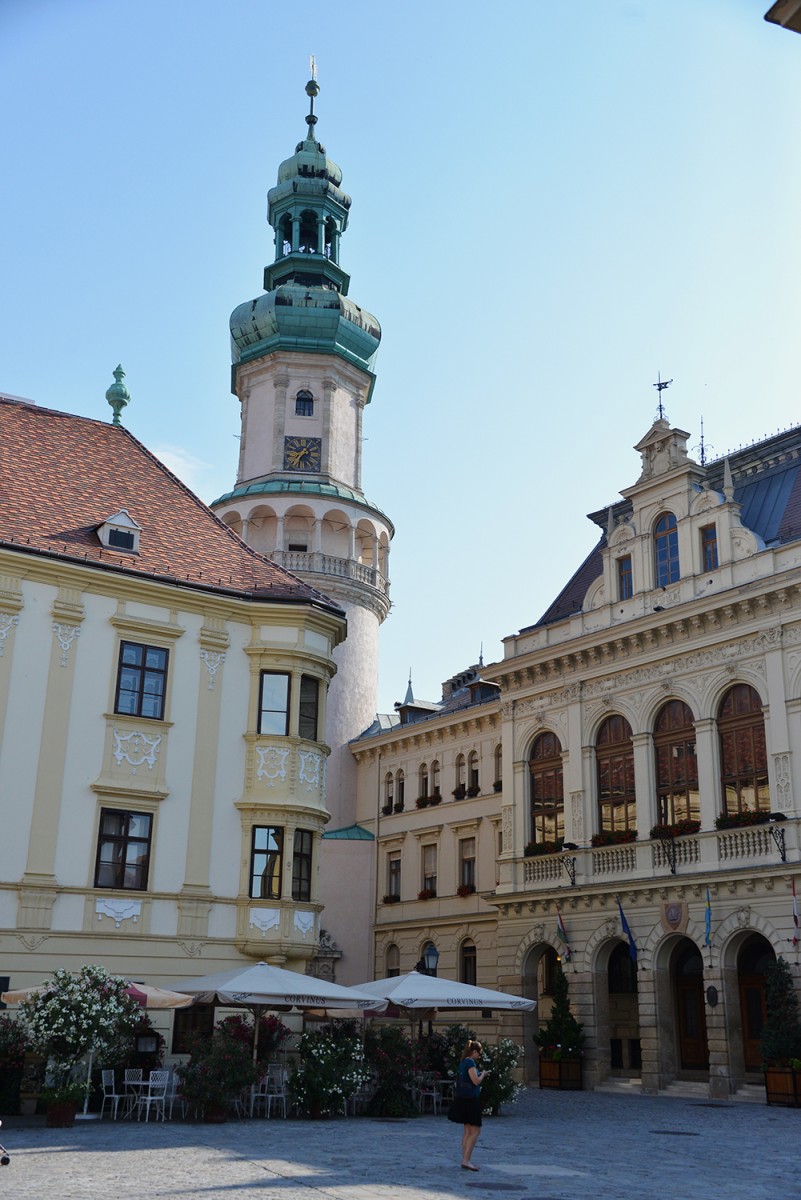
Sopron’s elegant architecture – with its ornate reliefs, projecting cornices, and colorful facades – once reveling in grandeur and prominence, are now worn and threadbare, interspersed with unflattering cement memories. Its stateliness is saturated with heartbreak, tragedy, and suppression. Are pockets of construction the sights and sounds of hope, or will tolling bells continue to reverberate the heavy spirit of oppression and sorrow?
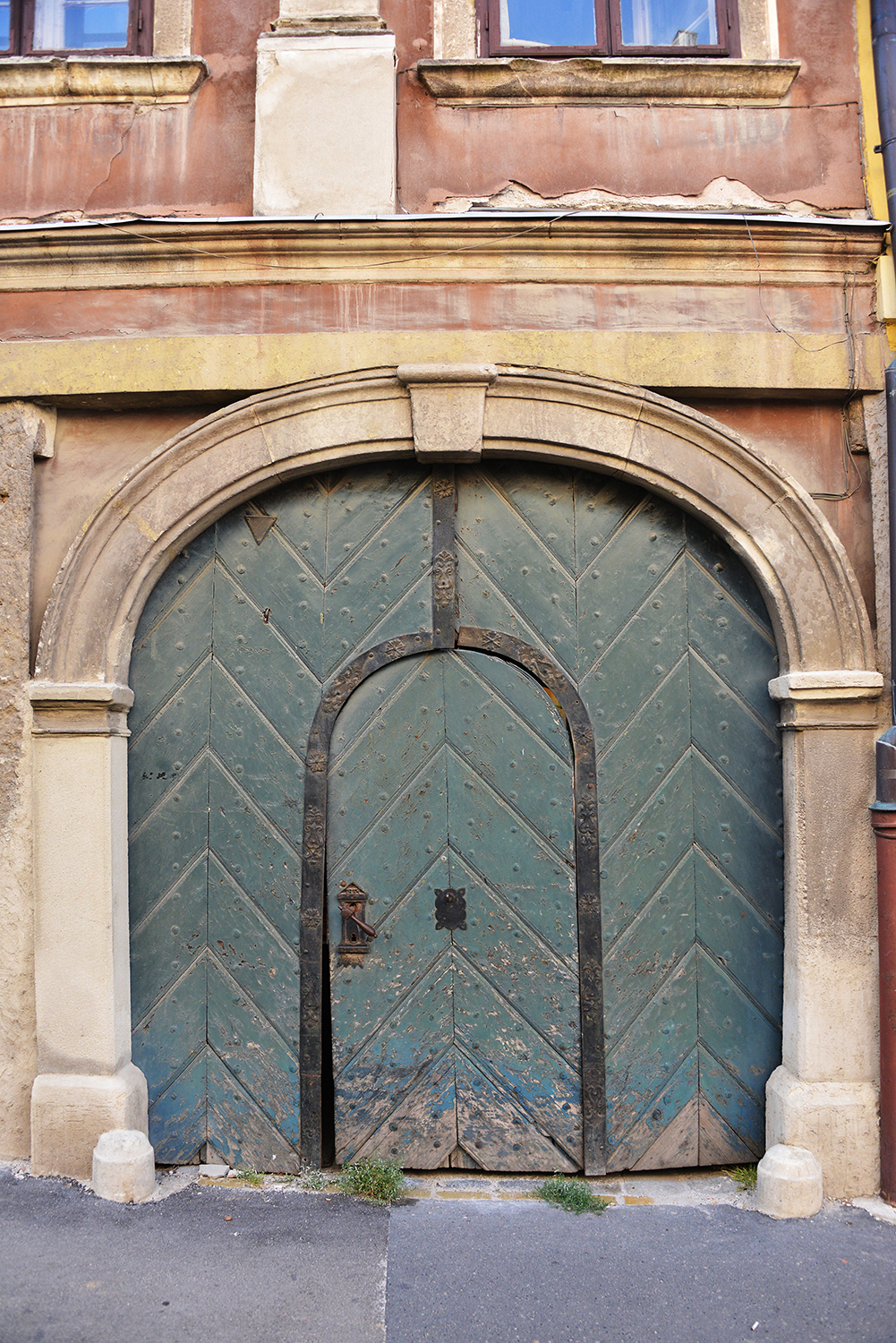
This blogger was captured by the beauty of the Alps, the charm of Salzburg, and the magnificence of Vienna, yet Sopron shoves everything it has endured right in your face, a “take-away” level reminder that travel through Europe is not always about accessibly enjoyable palaces, beer gardens, and Alpine lodges. My world view and knowledge was broadened by our mere 17 hours here.
Click here to see more photos of Sopron.
~ posted by Jennifer Clary


